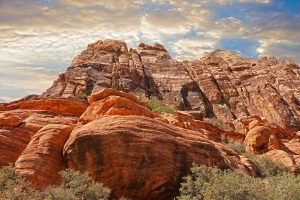ESE makes science relevant and memorable by helping people understand what they see outside, an approach we call backyard earth science. We teach teachers how to observe familiar landforms and ask questions about them. We teach the rock cycle as a story using rocks teachers collect from Little Cottonwood Creek. We discuss climate change using evidence of Ice Age Lake Bonneville. We encourage teachers to embrace uncertainty and value good questions. ESE’s special niche is that we give teachers, and others, confidence as well as competence to teach earth science principles, hands-on, outdoors, right in their neighborhoods.

We (a) teach courses and (b) develop resource materials. Please click on our Courses menu item above to learn more about these valuable convenings. Resource materials are hard copy note books for teacher-participants in our summer in-services. Eventually these notebooks will become web resources written for teachers but useful to others, such as scout leaders and parents.
We focus our efforts. Our target audience is teachers, specifically Utah elementary teachers. Why? We are told that elementary teachers turn young people on or off to science. Many elementary teachers are women who role model that they “can’t do” science. However, most teachers are good story tellers. Most are interested in their neighborhoods, and in their students’ environment. We teach teachers how to use local geology to teach students about their rocks, their landscapes, their hazards, their resources, in short, their Earth system. We discourage memorization and rote vocabulary and encourage questions and stories. When a teacher tells an accurate story about a rock’s history, she teaches science. We have found that elementary school teachers are more likely to turn students on to science when they, themselves, are confident as well as competent in telling the history of our valley, the story of Great Salt Lake , the journey of a rock along the rock cycle.
